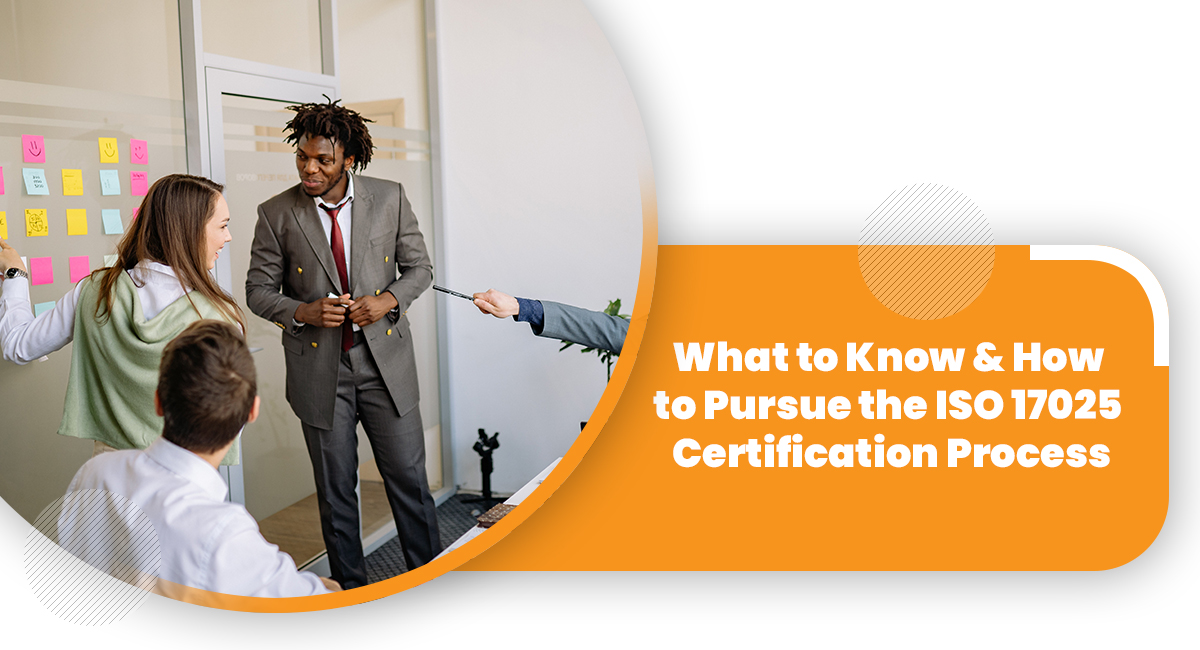
Safety practices are necessary to run a testing or calibration centre. The ISO 17025 is the most effective standard that offers relevant procedures and policies for running a testing house and producing valid results. As there are growing competition in the testing and calibration centre is evident, it is important to gain a competitive advantage and secure a market position. The ISO 17025 is the easiest mechanism for increasing the competitive barrier. As it helps stakeholders to comprehend the ultimate objectives of the fundamental service of calibration or testing companies.
The international standard is known for enabling laboratories to operate competently to supply reliable results before the expected time limit. To implement a system according to the conditions of the standard, the ISO 17025 certification process needs to be pursued religiously.
The process allows the stakeholders to learn more about the testing and calibration methods, devices, and other associated aspects. Gradually all the internal departments become initiative-taking and engage in the decision-making process. Accomplishing this process is key to achieving 100% compliance. If you fail to adhere to the regulatory terms and conditions, you may face government intervention followed by steep penalties.
The following blog will discuss some of the significant facts regarding the certification process.
Why Is the ISO 17025 Necessary?
• It is the widely acknowledged quality management system, which fits the safety and result processing procedures successfully. Therefore, stakeholders can obtain a better vision and assistance for performance.
• As the standard helps with helping to meet customer requirements and shows clear guidance on the application of different technical methods, the stakeholders automatically acquire competitiveness. Their performance becomes more dependable to the target market.
• Profit is a crucial aspect of any business organisation. With constant delivery of valid results, a company gradually strengthens its competitive barriers, which affects profit margins and with time, the number of customers will increase and therefore steady income is achieved.
• This certification plays a key role in improving the brand name. Consequently, a company gets the opportunity to enjoy market expansion.
What is the ISO 17025 certification process?
You need to follow certain steps to achieve compliance with ISO 17025 certification. They are as follow:
Step 1 – Know your audience and identify their requirements.
You cannot beat the market competition if you cannot identify and predict customer expectations timely. First, determine who is in your audience and what are their demands. For laboratories, the common expectation is to receive reliable reports as fast as possible. This audience appreciates valid results before the promised deadline. Besides, there are certain requirements as per different testing sectors. Your laboratory’s unique selling proposition must be determined with SMART objectives. It will clear your stakeholders’ doubts, increase their awareness, and consequently make them more initiative taking.
Step 2 – Understand the requirements of the ISO 17025 and then implement them.
Comprehending the clauses of the ISO 17025 is necessary before proceeding with the implementation. The fundamental requirements are:
• Organisational context and scope of the system of ISO 17025
• Policies and objectives
• Determining resources, technical facilities, devices, environmental conditions, metrological traceability, and external products
• Leadership and employee training from time to time
• Operations
• Inspection, supervision, and review of the system after the modifications
• Review meetings
• Continual improvement
These are the necessary legal criteria to fulfill before implementing the system.
Step 3 – Develop quality management.
The sole purpose of the ISO 17025 is to build a quality management system, which will successfully exceed the satisfaction level of the customers. In step 3, a laboratory or testing centre must design, develop, and enforce a sustainable and effective QMS system.
Step 4 – NATA Assessment
The NATA assessment plays a crucial role in the process. This assessment helps to determine whether customers can rely on the test results or not. For providing complete assurance, the assessment is necessary. Without the professional presence and their advice, the assessment program should not be conducted.
Step 5 – Internal audit and readiness check
The last step is performing an internal audit and readiness review to inspect the progress and determine if the target has been accomplished or not. To get the ISO 17025 certification, the readiness of the system needs to be evaluated, so that the external audit and registration takes minimum time. Through an internal audit, the financial progress due to the modifications is counted. The review, on the other hand, will highlight the areas that still need corrections.
To achieve all these steps without any failure, contact us at Compliancehelp. We are Australia’s premium site for achieving any ISO certification. Our bespoke solutions are ready to guide you through the exhausting ISO 17025 certification process without any difficulties.

Get connected with us on social networks!